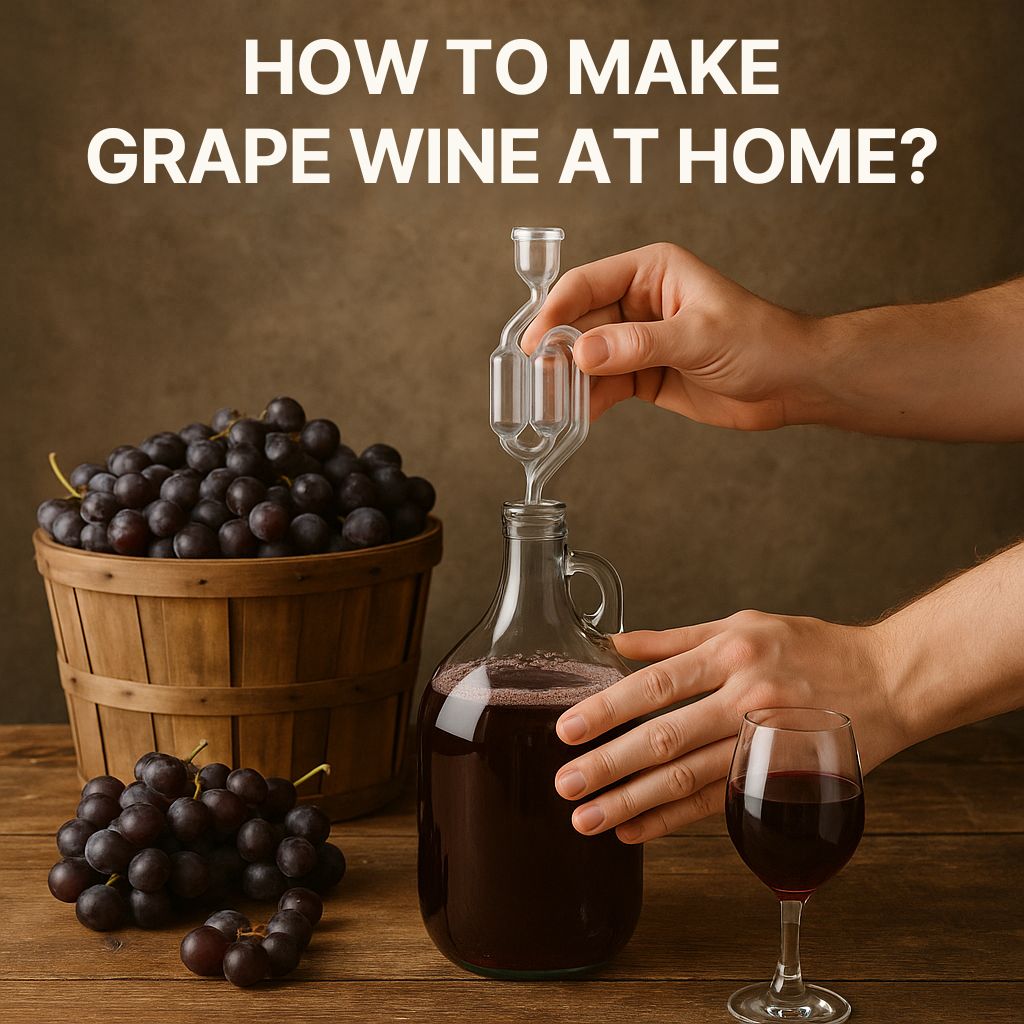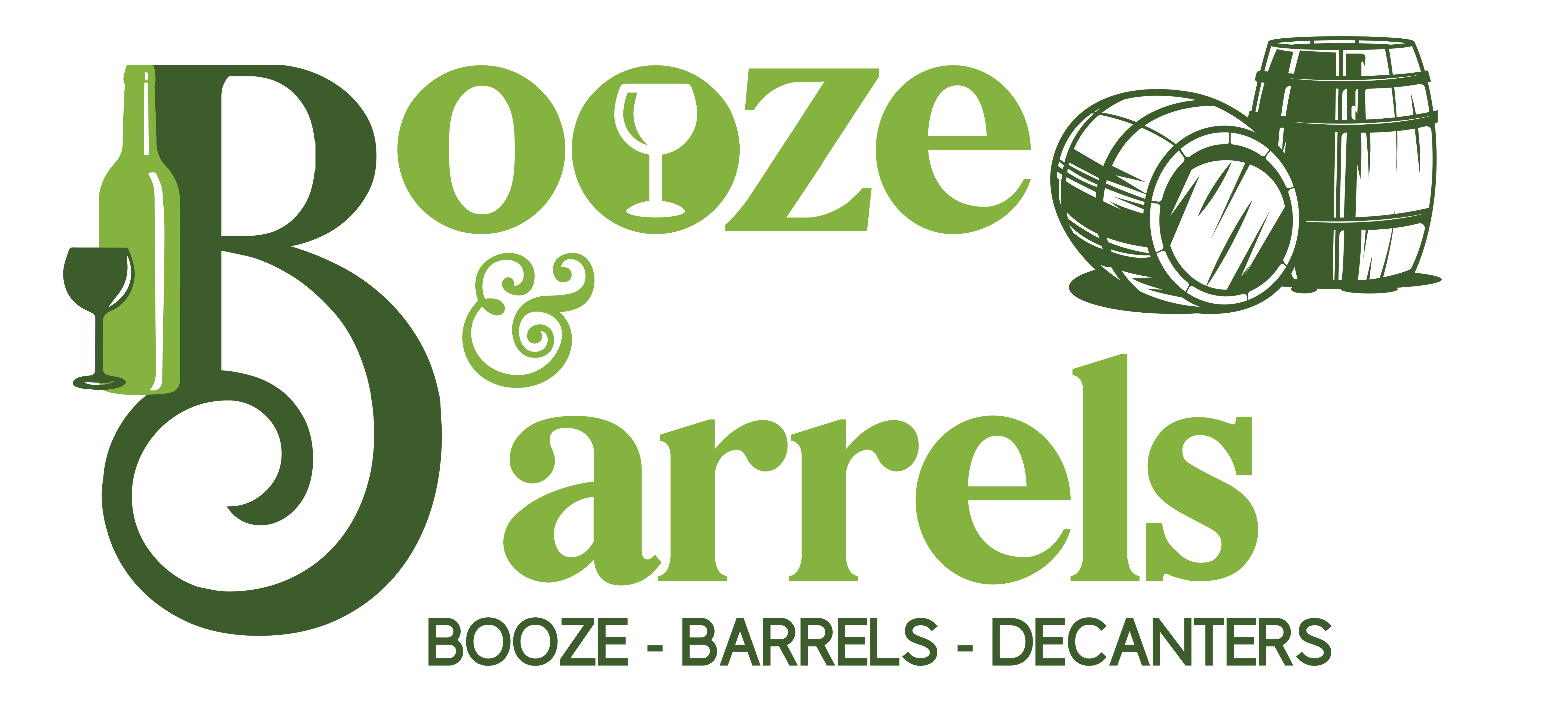
How to Make Grape Wine at Home
Making grape wine has come a long way - from ancient foot-crushed traditions to high-tech precision fermentation. Today, wine lovers in Australia are increasingly turning to home winemaking, not just for the taste but for the experience of crafting something truly personal. Whether you're drawn to the rustic charm of wild fermentation or prefer the clean control of stainless-steel setups, the way you make your wine shapes its flavour, texture, and aroma.
Traditional methods rely on natural yeasts, open-air fermentation, and minimal interference, often producing unique, vintage-specific results. In contrast, modern approaches use cultured yeast, temperature-controlled tanks, and smart tools that offer more consistent outcomes and fewer surprises. Both have their place, but in Australia’s warm climate and evolving DIY culture, a blended approach often works best.
This guide walks you through exactly how to make grape wine at home using the methods most suited to Australian conditions, while also offering insights into global practices so you can choose the style that fits you. Whether you're making your first batch or refining your process, you'll find everything you need to get started - simply and successfully.
What You Need to Know Before You Begin
Before you dive into the grape-crushing fun, there are a few essential things every Aussie home winemaker should know. From legal basics to seasonal timing, setting up your first batch starts with good preparation and clean gear.
Is It Legal to Make Wine at Home in Australia?
Yes, home winemaking is completely legal in Australia as long as it’s for personal use only. There’s no limit to how much wine you can make at home, but selling or giving it away publicly is illegal unless you’re properly licensed. This includes selling to friends, at markets, or at events.
A few more legal pointers to keep in mind:
- You must be 18 or older to legally make alcohol at home.
- Distilling spirits (like vodka or whiskey) is not allowed without an ATO licence - even for personal use - due to health and taxation regulations.
Stick to wine or cider, and keep it for yourself or private use.
Basic Equipment You’ll Need
You don’t need a fancy winery to make great wine. Here’s a list of affordable, beginner-friendly tools to get you started safely and cleanly.
Essential Equipment:
- Food-grade fermentation buckets (20 - 30L) - used for your first fermentation.
- Airlocks & bungs to release gas while preventing air contamination.
- Glass demijohns/carboys (19 - 23L) for ageing and secondary fermentation.
- Hydrometer & test jar to track sugar levels and alcohol content.
- Siphoning tubes / auto-siphon for transferring wine without stirring up sediment.
- Cleaning solution & no-rinse sanitiser like Star San or PBW to keep bacteria away.
- Thermometer, measuring cups, and a long stirrer to help with accurate measurements.
Tip: Avoid non-food-grade plastic or metal - it can leach chemicals or cause spoilage. Using proper cleaning and sanitisation tools is often the #1 factor that separates a good batch from a spoiled one.
Best Grape Varieties for Australia
Australia’s wine regions are world-famous for a reason. With warm climates and diverse soils, many grapes thrive here. If you're buying grapes or juice from a local vineyard, here are popular picks for home winemakers:
Red Wine Grapes:
- Shiraz (Syrah) - full-bodied, spicy, rich; beginner-friendly.
- Grenache - lighter, fruity, perfect for blends or solo.
- Cabernet Sauvignon - bold, structured; needs proper ripeness.
- Pinot Noir - delicate and elegant, but tricky to master.
White Wine Grapes:
- Chardonnay - adaptable and widely available; can be crisp or buttery.
- Sauvignon Blanc - fresh and zesty with herbaceous aromas.
- Riesling - aromatic and sharp; good for ageing.
Practical Insight: Start with Shiraz or Chardonnay - they’re forgiving, easy to source, and well-suited to most regions across Australia.
When Is the Right Time to Start?
Timing is everything in winemaking and Australia’s grape harvest, or "vintage season," happens from late January to April, depending on your region and the grape variety.
Best Time to Harvest or Buy Grapes:
- Late Jan - Feb: Sauvignon Blanc, Pinot Gris, sparkling base wines.
- Feb - March: Shiraz, Chardonnay, Pinot Noir.
- Late March - April: Cabernet Sauvignon, late-harvest or dessert wines.
Tip: If you're sourcing from a vineyard, plan early - they often take reservations from home winemakers before vintage season begins.
Don’t have access to fresh grapes? Grape juice concentrates and winemaking kits are available year-round at most homebrew supply stores across Australia.
Step-by-Step Guide to Making Grape Wine at Home in Australia
Making wine at home might seem complex, but with the right method, it’s surprisingly doable. This section walks you through each stage in a clear, easy-to-follow structure tailored to Australian conditions.
Phase 1: Preparation & Primary Fermentation (Day 0–7)
Harvest or Buy Grapes
- When: February to April (Australian harvest season)
- What to choose: Ripe, clean grapes like Shiraz, Grenache, or Chardonnay
-
Why: Riper grapes = better flavour and balance
According to CSIRO, ripeness directly affects wine quality.
Sort, De-stem & Crush
- Remove stems (they cause bitterness).
- Gently crush grapes to release juice (must).
- For red wine, keep the skins for fermentation.
- For white wine, press immediately after crushing.
Add Campden Tablets (Optional)
- Add 1 crushed tablet per 5 litres.
- Let must sit for 12–24 hours.
- Purpose: Kills wild yeasts & bacteria.
Add Pectinase (Optional for Whites)
- Breaks down pulp for clearer wine.
Add Yeast
- Rehydrate a wine yeast like EC-1118.
- Stir into the must.
- Add yeast nutrient to help fermentation.
Start Primary Fermentation
- Use a sanitised fermenter with an airlock.
- Maintain temperature:
- Red wines: 20–26°C
- White wines: 15–20°C
- Watch for bubbles in 24–48 hours.
Punch Down the Cap (Red Wine Only)
- Grape skins float to the top - stir 2 - 3 times/day.
- Helps extract colour and tannins.
- Prevents spoilage.
Phase 2: Pressing, Racking & Secondary Fermentation (Day 7–30)
Press the Wine
- For red wine: Press grapes after 5–10 days (once bubbling slows).
- For white wine: Already pressed earlier.
Transfer to Demijohn (Rack)
- Siphon wine into glass demijohns or carboys.
- Leave sediment (lees) behind.
- Attach an airlock.
(Optional) Malolactic Fermentation (MLF)
- Softens wine by converting malic acid to lactic acid.
- Common for reds, some Chardonnays.
- Add bacteria or allow to occur naturally (~18–20°C).
Monitor Fermentation
- Use a hydrometer:
- Original SG: ~1.090
- When SG drops below 1.000 = fermentation nearly complete
Phase 3: Aging & Stabilising (Weeks 4+)
Second Racking
- When fermentation is done (SG ~0.998), rack into a clean demijohn again.
- Remove sediment to prevent off-flavours.
Add Sulphite (Optional)
- Add ¼ tsp of potassium metabisulfite per 20L.
- Prevents oxidation and spoilage.
(Optional) Clarification & Cold Stabilisation
- Add fining agents (e.g., Bentonite for whites).
- Chill wine to 0–4°C for 1–2 weeks.
- Prevents tartrate crystals in bottles.
(Optional) Filtration
- Improves clarity and microbial stability.
- Often skipped for homemade batches.
Ageing the Wine
- Store in a cool, dark place (12–18°C).
- Ageing times:
- Whites: 2–3 months (e.g., Sauvignon Blanc)
- Chardonnay: 3–6+ months
- Reds: 6–12 months (e.g., Shiraz, Cab Sauv)
Tip: Want to test flavour development before bottling? Pour a sample into a glass or use a decanter to observe clarity and aerate the wine gently for tasting.
Phase 4: Bottling & Storage (Month 3–12)
Sanitise & Fill Bottles
- Clean all bottles and tools.
- Fill using a siphon wand, leaving 1–2cm of space.
Cork & Seal
- Use a hand corker.
- Store bottles upright for 2–3 days, then on their side.
Label, Store & Age
- Include date, grape, and alcohol % (if known).
- Store in a cool, stable space for further aging.
- Taste a bottle every few months to monitor progress.
Beginner Tips for Making Better Wine at Home
Whether you're just starting or looking to improve your grape wine batches, these practical tips will help you avoid common pitfalls and craft better wine. They’re also perfect for social media sharing, bookmarking, or community engagement.
1. Prioritise Cleanliness (Sanitation is Non-Negotiable)
If it touches your wine, clean it first. Sanitise fermenters, bottles, airlocks, hoses, and even your hands using food-safe no-rinse sanitisers. This reduces the risk of contamination and spoilage dramatically.
2. Use Quality Grapes or Juice
Great wine starts with great fruit. Whether using fresh grapes or juice concentrates, make sure they’re ripe, clean, and free of mould or rot. Wine kits are also a good beginner choice as they’re balanced and simplified.
3. Choose the Right Yeast
Bread yeast won’t cut it. Use specific wine yeasts like EC-1118 or Montrachet for consistent fermentation, better alcohol tolerance, and clean flavours. These strains are designed to handle the stress of winemaking.
4. Monitor Fermentation Temperature
Temperature affects yeast activity. Keep it 18–24°C for reds, and 10–18°C for whites. Too hot = off flavours; too cold = stuck fermentation. Use a basic thermometer and avoid placing fermenters in direct sunlight.
5. Use a Hydrometer
A hydrometer measures sugar (Brix/SG) to track fermentation progress and estimate alcohol. It’s your best tool to know when fermentation starts, finishes, and if anything is going wrong.
6. Don’t Rush the Process
Good wine takes time. Let fermentation finish completely (SG around 0.998), then age the wine to settle flavours and tannins. Patience leads to clarity and better taste.
7. Minimise Oxygen After Fermentation
Once fermentation ends, oxygen is your enemy. Keep carboys full to the neck, use airlocks properly, and rack gently to reduce oxidation and vinegar risks.
8. Consider Oak Chips for Flavour
Barrels are expensive. Instead, use toasted oak chips or cubes in secondary fermentation for a smoother, richer profile. Adjust quantity and contact time to avoid over-oaking.
9. Keep a Winemaking Log
Document everything: grape type, dates, yeast strain, SG readings, racking times, and even taste notes. This helps you learn from every batch and troubleshoot errors.
Conclusion
Home winemaking is more than just a hobby - it’s a rewarding, creative craft that evolves with every batch you make. From mastering fermentation temperatures to learning the importance of proper ageing and oxygen control, the beginner tips in this guide are the foundation for making wine that you’ll want to share (or proudly keep for yourself!).
At Booze & Barrels, we understand that great wine isn’t just about what’s in the bottle—it’s about how you make it, age it, and present it. That’s why we offer a curated collection of tools and finishing touches to support your journey - from barrel that enhance flavour, to wine decanters and personalised decanters that elevate every pour.
Looking to gift your homemade vintage or serve it with flair? Explore our bartender kits, whisky stones gift sets, or our signature whiskey decanter and glasses combinations.
Whether you’re just getting started or levelling up your cellar game, Booze & Barrels is here to equip your passion with quality, character, and a touch of style.
So grab that hydrometer, trust the process, and let your wine (and your setup) tell a story worth sipping.
Cheers to your next pour!


